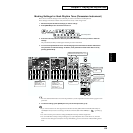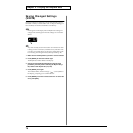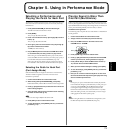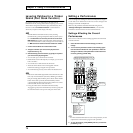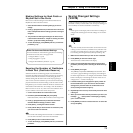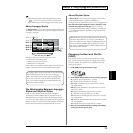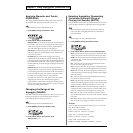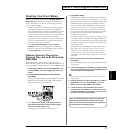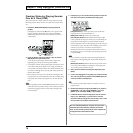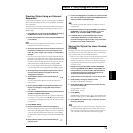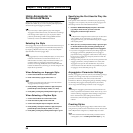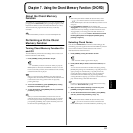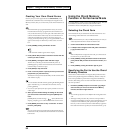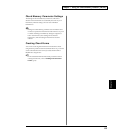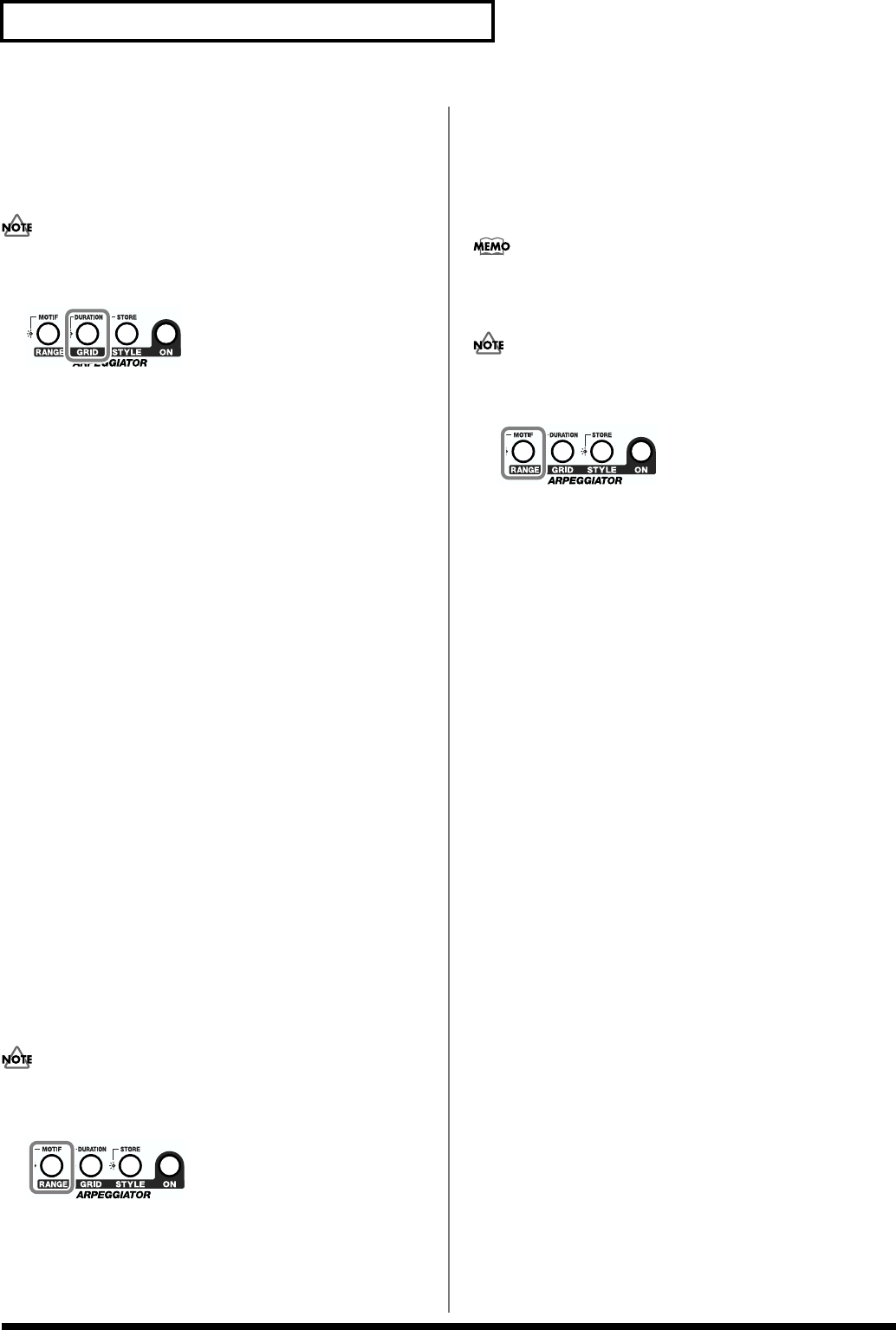
76
Chapter 6. Using Arpeggiator (ARPEGGIATOR)
Applying Staccato and Tenuto
(DURATION)
This setting (duration) determines whether the sounds are played
staccato (short and clipped), or tenuto (fully drawn out).
This setting has no effect with Rhythm Styles.
1. Press [GRID], causing the indicator to blink.
fig.06-05
2. Press [VALUE ▼/▲] to set the duration.
Settings values: 30, 40, 50, 60, 70, 80, 90, 100, 120, FUL, Ft1, Ft2
For example, when set to “30,” the length of the note in a grid (or
when a series of grids is connected with ties, the final grid) is
30% of the full length of the note set in the grid type.
FUL (Full): Even if the linked grid is not connected with a tie, the
same note continues to sound until the point at which the next
new sound is specified.
Ft1 (Filter 1): Just as with regular arpeggios, the varying
combinations of note numbers are played according to the keys
pressed during the performance; these are then substituted with
the controls relative to the filter cutoff frequency. The patterns of
the filter switching on and off changes according to how the keys
are pressed.
Ft2 (Filter 2): The note numbers originally played when the
Arpeggio Style was created are produced, regardless of the keys
pressed during performance; then these are the controls relative
to the filter cutoff frequency. This yields a fixed pattern where
the changes occur in steps, similar to a step modulator.
With both “Ft1” (Filter 1) and “Ft2” (Filter 2), the note number
designating the sound to be produced by Arpeggiator is
replaced with the controls relative to the filter cutoff frequency.
This provides a filter effect that changes the sound to a scale that
progresses according to the rhythm.
Changing the Range of the
Arpeggio (RANGE)
This adds an effect that shifts arpeggios one cycle at a time in octave
units (octave range). You can set the shift range upwards or
downwards (up to three octaves up or down).
This setting has no effect with Rhythm Styles.
1. Press [RANGE], causing the indicator to light.
fig.06-06
2. Press [VALUE ▼/▲] to set the octave range.
Settings value: -3–0–3
Selecting Ascending/Descending
Variations (Different Ways of
Playing the Sounds) (MOTIF)
This selects the method used to play sounds (motif) when you have a
greater number of notes than programmed for the Arpeggio Style.
When the number of keys played is less than the number of
notes in the Style, the highest-pitched of the pressed keys is
played by default.
This setting has no effect with Rhythm Styles.
1. Press [RANGE], causing the indicator to blink.
fig.06-06
2. Press [VALUE ▼/▲] to select one of the following motifs.
UP.L: Only the lowest of the keys pressed is sounded each time,
and the notes play in order from the lowest of the pressed keys.
UP.H: Notes from both the lowest and highest pressed keys are
sounded each time, and the notes play in order from the lowest
of the pressed keys.
UP._: The notes play in order from the lowest of the pressed
keys. No one note is played every time.
dn.L: Only the lowest of the keys pressed is sounded each time,
and the notes play in order from the highest of the pressed keys.
dn.H: Notes from both the lowest and highest pressed keys are
sounded each time, and the notes play in order from the highest
of the pressed keys.
dn._: The notes play in order from the highest of the pressed
keys. No note is played every time.
Ud.L: Only the lowest of the keys pressed is sounded each time,
and the notes in the arpeggio are played in order from the lowest
of the pressed keys and then back again in the reverse order.
Ud.H: Notes from both the lowest and highest pressed keys are
sounded each time, and the notes play in order from the lowest
of the pressed keys and then back again in the reverse order.
Ud._: The notes play in order from the lowest of the pressed
keys, and then back again in the reverse order. No note is played
every time.
rn.L: While only the lowest of the keys pressed is sounded each
time, the notes in the arpeggio are played in random order.
<Example>
Action of a Style starting from the lowest note, “1-2-3-2” when the
keys “C-D-E-F-G” are played
When “UP.L” is selected as the motif:
C-D-E-D → C-E-F-E → C-F-G-F (→ repeated)
When “UP._” is selected as the motif:
C-D-E-D → D-E-F-E → E-F-G-F (→ repeated)
When “Ud.H” is selected as the motif:
C-D-G-D → C-E-G-E → C-F-G-F → C-E-G-E (→ repeated)




